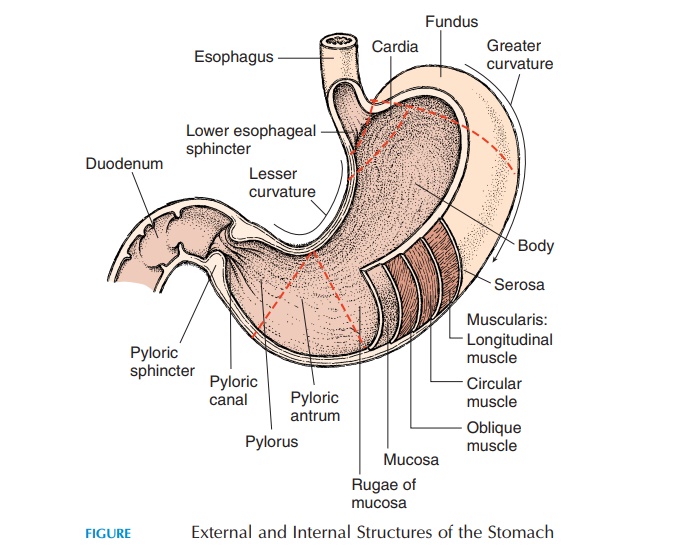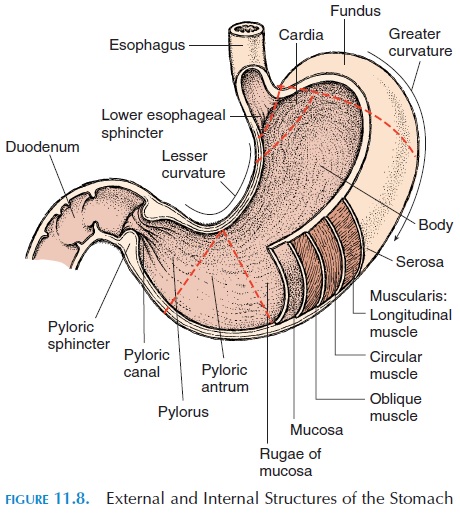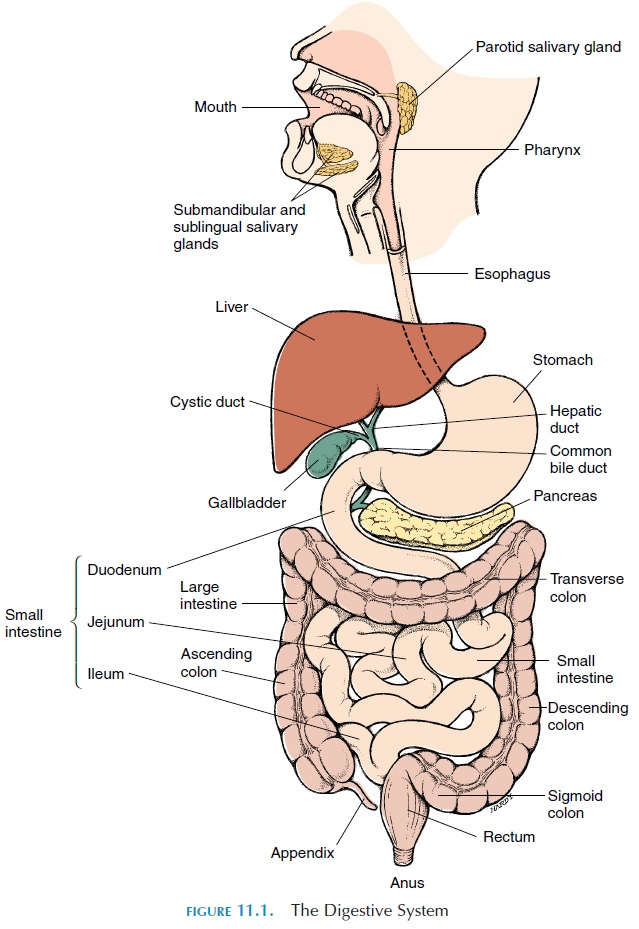Chapter: The Massage Connection ANATOMY AND PHYSIOLOGY : Digestive System
Stomach - Structure and Function of Digestive System

STOMACH
The stomach is a sac-like, J-shaped expansion of the gut that stores the ingested food and propels the partially digested food into the intestines in smaller quantities. By churning movements, it further breaks down the food particles. The walls of the stomach have an abundance of smooth muscle that run circu-larly, obliquely, and longitudinally. Contraction of this muscle helps churn the food.
Enzymes (pepsin and gastric lipase) and acid (hy-drochloric acid) secreted by the glands in the walls of the stomach help break chemical bonds and partially digest the food. The acid kills many ingested bacteria and provides the right pH for pepsin to start protein digestion. Mucus, made up of glycoproteins and secreted by mucous glands, protects the stomach wall from getting digested. The glands also produce a compound known as the intrinsic factor. Intrinsic factor is required for absorption of vitamin B12 in the small intestine. A total volume of about 2,500 mL (2.6 qt) of gastric juice is secreted per day.
The stomach is divided into specific regions (see Figure 11.8). The cardia is the proximal region, close to the esophagus. The fundusis the portion of the stom-ach that is superior to the junction with the esophagus. The body is the area from the fundus to the curve of the J. The pylorus is the area of the curve of the J; it narrows into the pyloric canal before it opens into the first part of the intestine, the duodenum.

Circular muscles—the pyloric sphincter—guard the opening and regulate the amount of food mate-rial that enters the duodenum. The consistency of food is changed by the end of the processing by the stomach; watery and acidic, it is known as chyme.
The activity of the stomach, similar to the rest of the gut, is controlled by the central nervous system, local nervous reflexes, and gastrointestinal hor-mones. The gastric secretion increases with the sight, smell, taste, and even thought of food. Other emo-tions, such as anger, can increase secretions. Fear, anxiety, and stress can reduce the activity. Impulses from the brain reach the gut via the vagus nerve (cra
When food arrives in the stomach, se-cretions are increased by the distension of the stom-ach, presence of undigested material, and pH changes. Food in the intestine has a feedback effect on the rate at which chyme is expelled into the intes-tine from the stomach. Details of the control mecha-nisms are beyond the scope of this book but, in short, nerves, local hormones, and local effects superim-posed by the central nervous system and hormones secreted elsewhere control the activity.
Digestion of proteins begins in the stomach. The digestion of carbohydrates and lipids that began in the mouth continues in the stomach until the pH drops (becomes acidic). The lining of the stomach is not conducive to food absorption. Few substances such as ethyl alcohol, some water, ions, short-chain fatty acids, and certain drugs (e.g., aspirin) are ab-sorbed here. The major part of digestion and absorp-tion occurs in the small intestine.

Related Topics